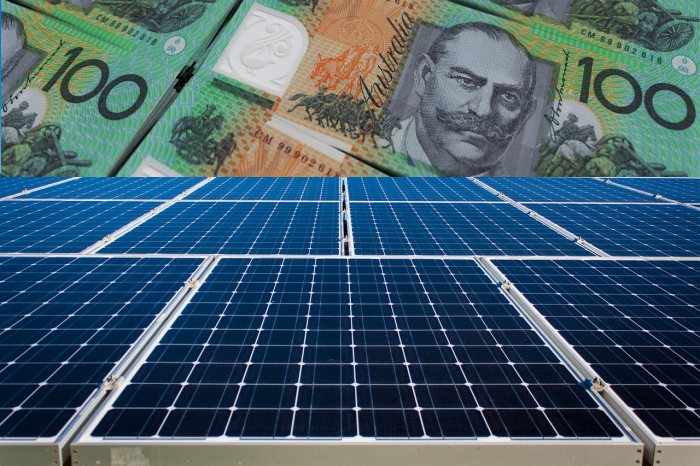
The cupboard was bare for solar power and renewable energy overall in NSW Budget 2018-19, but that isn’t likely to hold back the uptake of solar panels in the state.
Delivered yesterday, the Budget had little in it in relation to energy generally. In his Budget speech, Treasurer Dominic Perrottet had this to say:
“We’re launching a new ‘one-click energy switch’ web site, helping families claim the best energy deals.”
.. and that was about it, aside from a mention of low-income and special needs households saving up to $285 a year with the Government’s existing rebates.
While the cost of installing solar panels in New South Wales (and across Australia) is continuing to decrease, the bill-busting technology is still out of reach for many.
“The NSW budget doesn’t do anything to help people who rent, live in apartments or are low-income install cost-cutting rooftop solar and make the most of Australia’s abundant sunshine,” said Solar Citizens’ Shani Tager. “NSW’s 400,000 solar households and small businesses have sent a clear message with their wallets — they see clean solar power as the way to take back control of their power bills, it’s time for the Berejiklian Government to catch up.”
Ms. Tager also said the state’s energy system is “ageing, inefficient, polluting” and there was nothing in the Budget to help build the energy system of the future.
However, there is a fair bit going on in the state with solar farms. Last week we mentioned a couple of projects recently starting their EIS exhibition periods and the NSW Planning & Environment website shows significant activity; with many solar projects in various stages. Green Energy Markets’ most recent Renewable Energy Index indicated 928MW of large-scale renewables under construction in the ACT & NSW.
In terms of small-scale solar (<100kW capacity), the latest information from Australia’s Clean Energy Regulator indicates 417,475 systems are installed throughout the state. In April, there were 4,962 rooftop solar systems installed in the ACT and New South Wales.
The simple payback period of a 5kW solar system (installed in Sydney) is currently around 5.3 years.
New South Wales Electricity Prices
While electricity prices will be dropping for some NSW residential customers from July 1, it won’t be by much at best. Here’s how the Big Three stack up:
- Origin – unchanged
- AGL – 0.3% reduction
- EnergyAustralia – 0.2% reduction; except in the case of those on the Secure Saver plan, who will see a 3% reduction.
While it will be little comfort for those doing it tough, SQ blogger Ronald crunched a bunch of numbers in February this year and determined that Sydney has the cheapest electricity of all the capital cities in Australia.
New South Wales Solar Feed In Tariff
For those with solar power already installed, IPART’s draft all-day solar feed-in tariff benchmark for 2018-19 is 7.5 cents per kilowatt hour, which is quite a drop from the current NSW feed-in tariff benchmark range of 11.9 to 15.0 c/kWh.
IPART’s draft time-dependent solar feed-in tariff benchmarks are:
- 6.9 to 7.2 c/kWh between 6:30 am – 3:30 pm
- 8.9 to 11.7 c/kWh between 3:30 pm – 4:30 pm
- 11.3 to 13.3 c/kWh between 4:30 pm – 5:30 pm
- 12.8 to 20.9 c/kWh between 5:30 pm – 6:30 pm
- 8.7 to 9.6 c/kwh between 6:30 pm – 7:30 pm
- 8.4 to 8.5 c/kwh between 7:30 pm – 8:30 pm
All of the above figures are only a guide. In New South Wales, retailers can pay as much or as little as they wish – or nothing at all (currently most are paying 9c – 12c all-day rate). The final recommendations from IPART are yet to be released, but will be published by June 30.
Regardless of whether retailers take heed of the recommendation and what option they elect (all-day or time-dependent), solar will still be a very good investment in New South Wales, particularly if the focus is on self-consumption of electricity generated.
Pick up some tips on solar power system sizing.

 RSS - Posts
RSS - Posts



Speak Your Mind